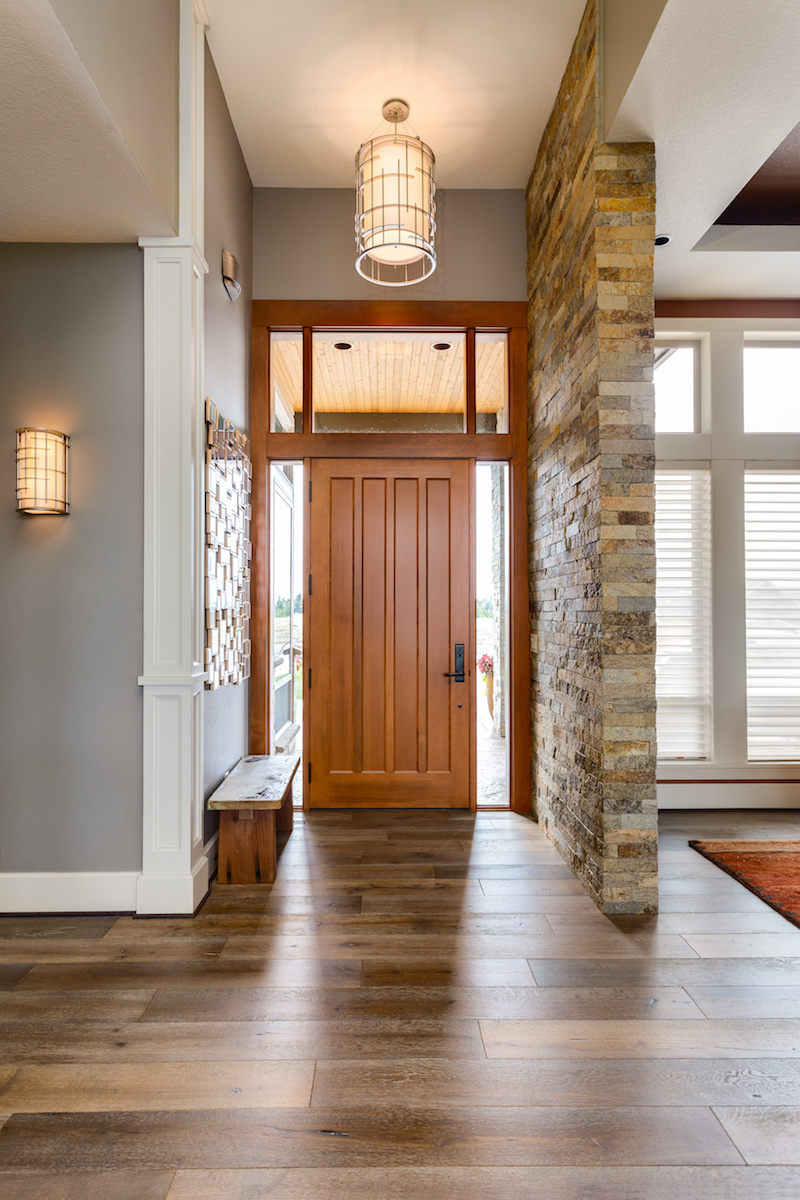As the outer shell that protects your timber floor from scratches, spills, and the wear and tear caused by foot traffic, your floor finish is the guardian of your hardwood. But over time, the protective coating wears down and will need to be sanded and refinished. Whether you plan to refinish a floor yourself or hire professionals, picking a coating is the first step to a smooth and protected floor.

The Most Popular Hardwood Floor Finishes
According to Hardwood Floors Magazine’s, State of the Wood Flooring Industry 2016: A Steady Climb, 49% of the finishes sold between 2015-2016 were water based. After that, oil modified, conversion varnish and tung oil (or shellac) coatings were also popular.
Shellac:
Easy to brush on and relatively inexpensive, Shellac finish has very few VOC’s (volatile organic compounds), however shellac isn’t very durable and will need to be recoated on a regular basis. Because this finish isn’t compatible with contemporary finishes (like polyurethane), only use this if you’re touching up aged wood flooring with an existing Shellac finish.
Penetrating Oil Sealants:
An easy to apply finish, oil-based sealants have a mild gloss and are known for the absence of toxic components. Its ability to penetrate pours in wood enables these finishes to bring out subtle grain patterns, making it the perfect way to bring out the contrast of a grain in light and dark floors. Because penetrating oil sealants are quite easy to work with, they’re a good choice for homeowners interested in tackling this project themselves.
Wax Finishes:
One of the original ways to refinish floors, wax has been tried and tested over centuries. Wax finishes are susceptible to stains, and must be reapplied regularly to truly benefit the floor. Perhaps one reason they’ve declined in popularity over the years is the need to completely remove the floor’s existing wax layer before applying a new coat. Regardless, wax finishes are easy to apply compared to other finishes and offer a low VOC output for cleaner air quality.
Moisture-Cured Urethane:
One of the most durable hardwood floor finishes available, moisture-cured urethane finishes are extremely effective in frequently used areas like kitchens, entryways, and hallways. Because the finish is extremely quick to dry, it is not recommended for DIY projects. It’s also important to note that these finishes are very high in VOC’s, and the fumes from the application can last for weeks. Because of the high toxin levels in moisture-cured urethane sealants, homeowners and pets are usually asked to leave the home while flooring professionals get the job done safely.
Polyurethane:
One of the most popular types of flooring polyurethane finishes (also known as “polys”) is a staple of today’s hardwood flooring industry. There are currently two primary types of polyurethane coatings:
Oil:
Unbelievably durable and appropriate for DIY use, oil based polys are relatively inexpensive. Although they are easy to apply yourself, it can take anywhere from 8-10 hours for them to dry per coat. Over time, oil based polys may begin to yellow.
Water:
Unlike oil polyurethane finishes, water-based hardwood floor finishes are relatively quick to dry and do not yellow over time. They also are much lower in VOC output, however are slightly more expensive than their oil-based counterparts.
Picking the right finish for your home will be a matter of personal preference. Consider your budget, time frame to complete the project, and the value you place on picking an eco-friendly, long lasting finish. Once you know the answer to these points, you can begin picking the best floor covering for you. If you thought the information in this blog was interesting, click here to read a larger selection of our previous blogs.
